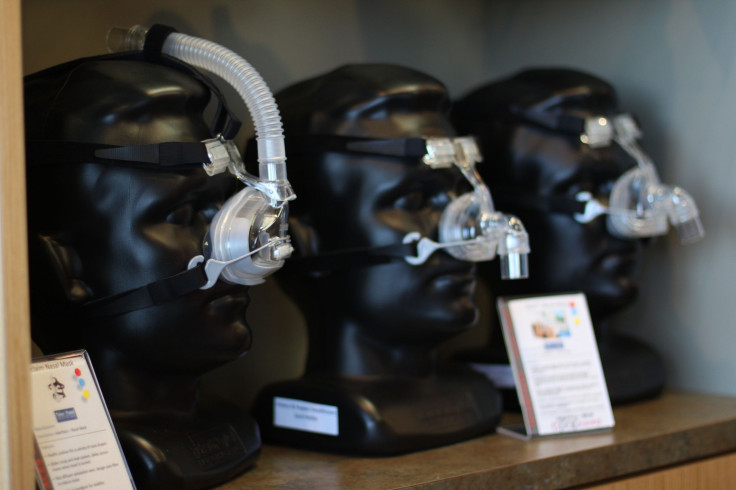Sleep Apnea: A Paradox To Diagnose And A Leader For New Tech

Diabetics can monitor how much sugar is in their blood. People with arthritis can (quite literally) feel the inflammation in their bones. But they are the lucky ones, believe it or not, at least as far as diagnoses go. People with sleep deficiencies encounter a far deeper problem: They don’t know they have them.
Insufficient sleep is an anomaly in the diagnosis world — nearly 80 percent of people with sleep apnea, a blockage in the throat that impedes air to the lungs, don’t know they suffer from the disorder, yet the lone confirmation that someone is tired during the day says nothing. The entire premise of sleep disruption is that it happens when you aren’t consciously perceiving it, unlike other physical disruptions of, say, the circulatory or skeletal systems. Fortunately, after decades of stagnated progress, scientists are finally going back to the drawing board.
Striking It Rich
The gold standard for diagnosing the greatest sleep disturbance, obstructive sleep apnea, has long been polysomnography (PSG). It combines several biophysical measures, including brain wave activity, rapid eye movement, and muscle activity, to paint a picture of how well a person is sleeping. Most recently — that is, 40 years ago — researchers began measuring breathing patterns as well.
But for its modest upside, PSG has many flaws. Tests are hard to come by, and when patients finally get one, they tend to carry a massive price tag. And the tests aren’t entirely reliable. With a bundle of wires snaking throughout patients’ limbs and tubes running from their throat, the sleep lab’s basic task of mimicking a normal sleep environment becomes its own problem.
“We call it the gold standard,” said Ariel Tarasiuk, sleep researcher at Soroka University Medical Center, in Israel. “Nobody said that there is gold there.”
Recently, Tarasiuk collaborated with researchers from Ben-Gurion University to test a brand-new form of apnea detection, which throws away the many moving parts of PSG and keeps only the respiratory monitoring. They call their technology breathing sound analysis (BSA), and it relies on a non-contact microphone that isolates breathing patterns and sends the raw data to a machine equipped with an in-house algorithm to interpret the sounds. Researchers can then read the patterns to see by 30-second intervals exactly when disruptions occur.
In their study, Tarasiuk and his two colleagues found BSA rivaled PSG in how well it could pick out apnea — its “sensitivity” — but it actually surpassed PSG in its ability to cancel out the unwanted noise, meaning it was more specific. As the researchers point out, since BSA uses none of the wires involved with traditional testing, it can scale from clinical apnea models to general sleep disruption to at-home applications relatively easily, which cost-conscious insurance companies would be happy to see.
“They want to find something in which it’s like a urine test and you know something and it only costs one cent,” Tarasiuk said. This is in contrast to current sleep tests, which can easily costs thousands.
The technology, unfortunately, hasn’t caught up to that desire. Questionnaires are the best tool we have, despite their many drawbacks. Self-reports are notoriously unreliable. Especially if people live alone, the challenge needs to be deferred to some other entity that can “watch” in the background. Smartphone apps that analyze people’s quality of sleep are largely gimmicks, says Yaniv Zignel, co-author of the recent study. If you want real evidence of a problem, you need to use real science.
“There is an idea, there is an algorithm, but no real patients.”
Another misguided route, Tarasiuk says, is erasing a person’s snoring thinking it will solve the larger problem. It’s all too common, he says, that a person who snores will visit an ear, nose, and throat doctor and sign up for a sleep study and have a mild cause of apnea that compels the doctor to order laser surgery. This surgery can eliminate the snoring, but snoring isn’t the underlying condition. Tarasiuk compares it to removing the smoke alarm during a fire. The snoring is the alarm. What you really need to treat is the apnea — the fire.
On The Brink
If the research on BSA can progress far enough, the team’s plans for a smartphone app would be the first to have clinical data behind it. People could monitor their own sleep habits and gain more information that can direct them to see a doctor, thereby bridging the gap between complete ignorance and full-on diagnosis.
Poor sleep isn’t just elusive, it’s also deadly. The CDC has officially called insufficient sleep a public health epidemic. In certain circumstances, drowsy driving can be as fatal as drunk driving, and several cities have enacted laws specifically targeting drivers whose erratic lane-switching appears to stem from fatigue.
Of course, such programs address the problem from the wrong end. If people can’t help themselves, they’ll never decide to go to the doctor. In this sense, awareness is king. If apnea sufferers and the rest of the sleep-disturbed population can learn about their condition, they can seek help. Screening, thankfully, is heading in that direction.
“MRI made our bodies transparent,” Tarasiuk said. And in the years that followed that discovery, numerous leaps have effectively turned the human body inside out, with the age of clunky wires finally coming to an end. “The world is on a fast-track to non-contact technology,” he said. Sleep research seems poised to lead the charge.



























